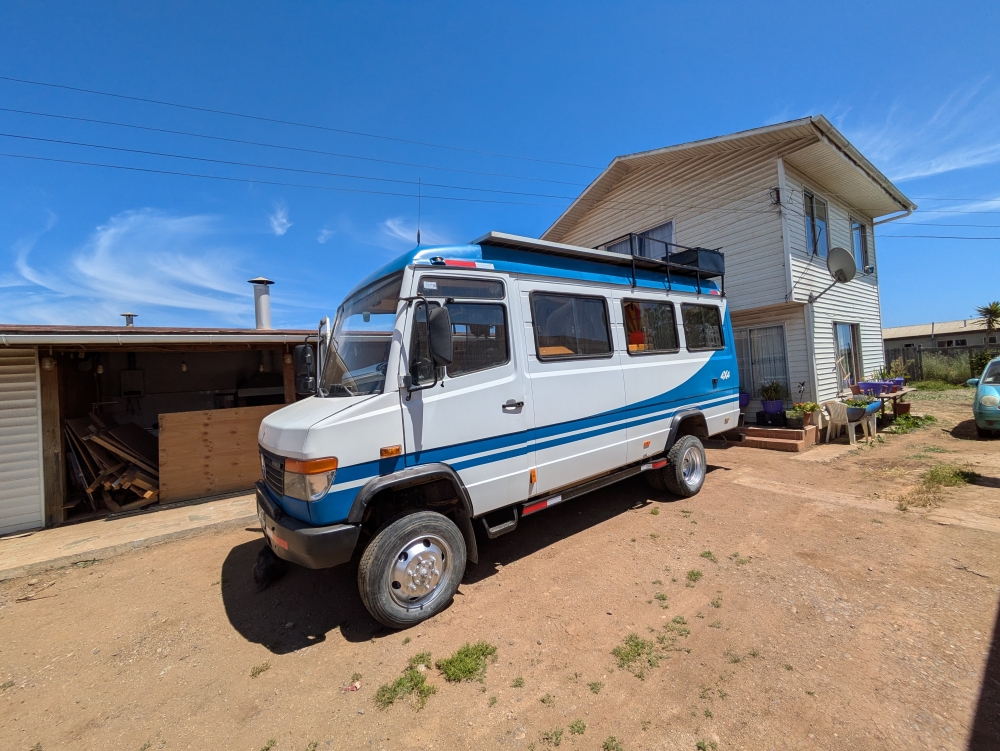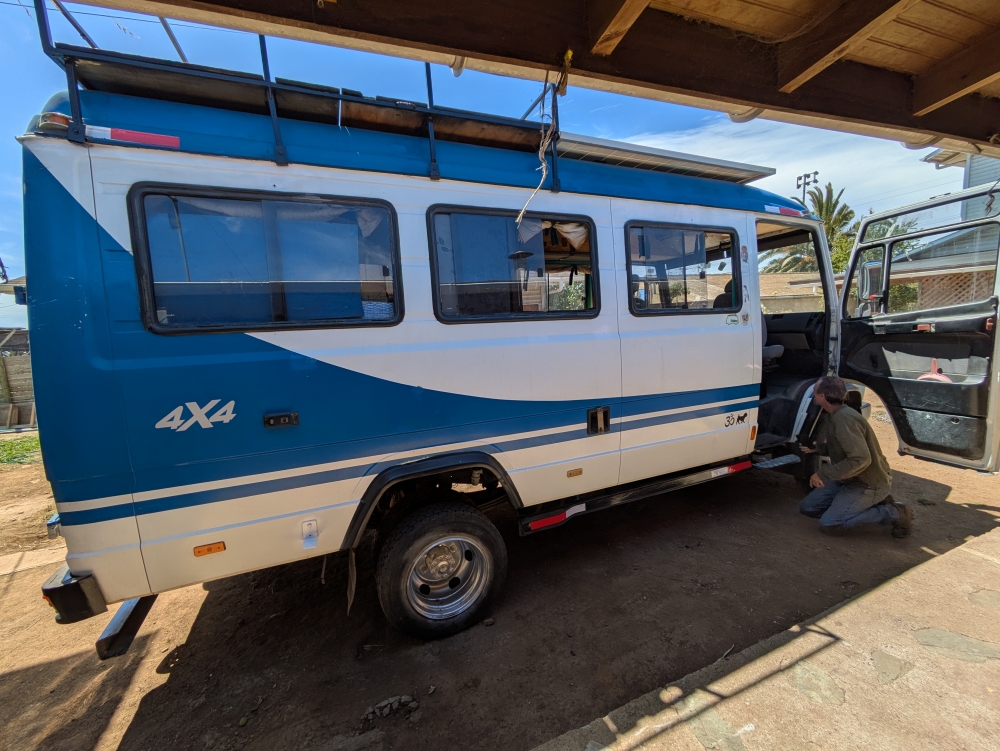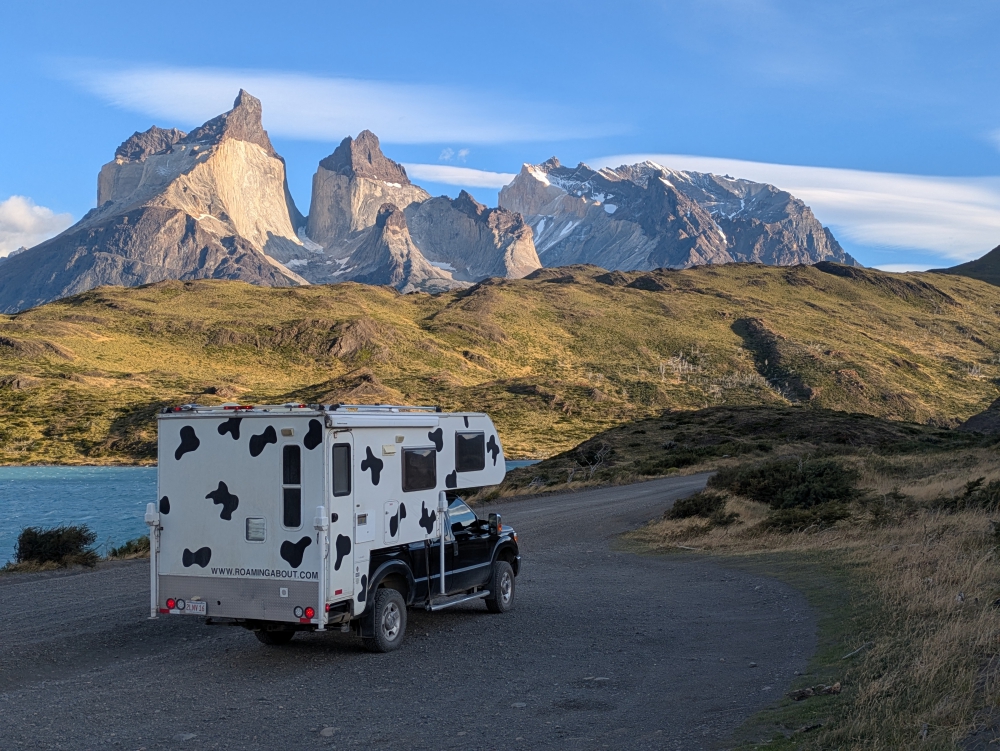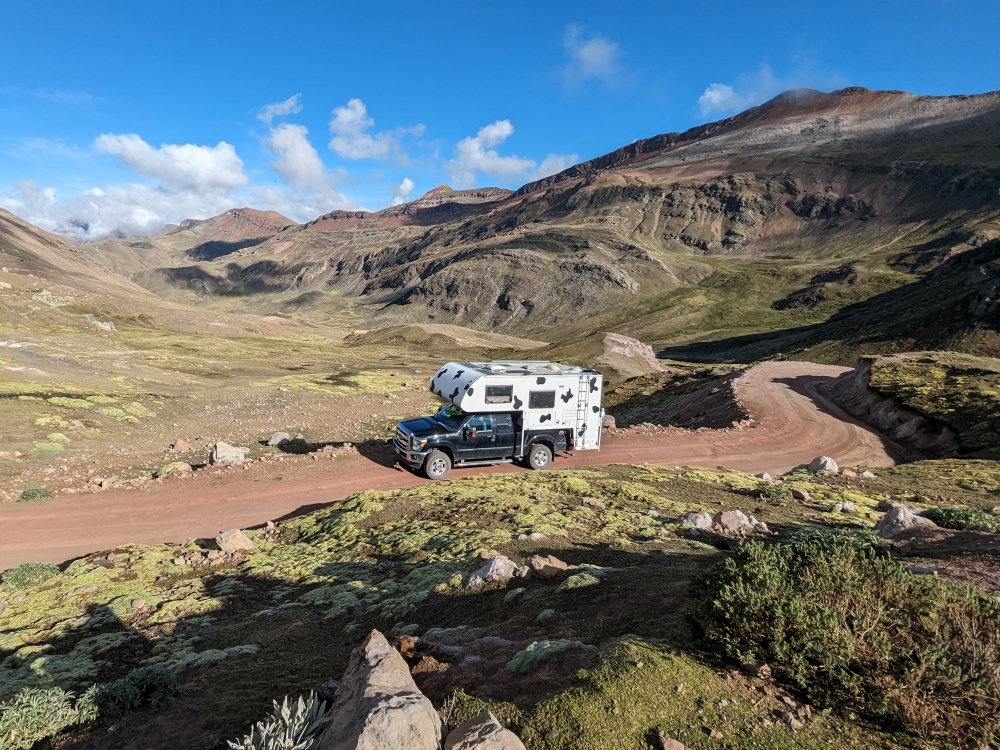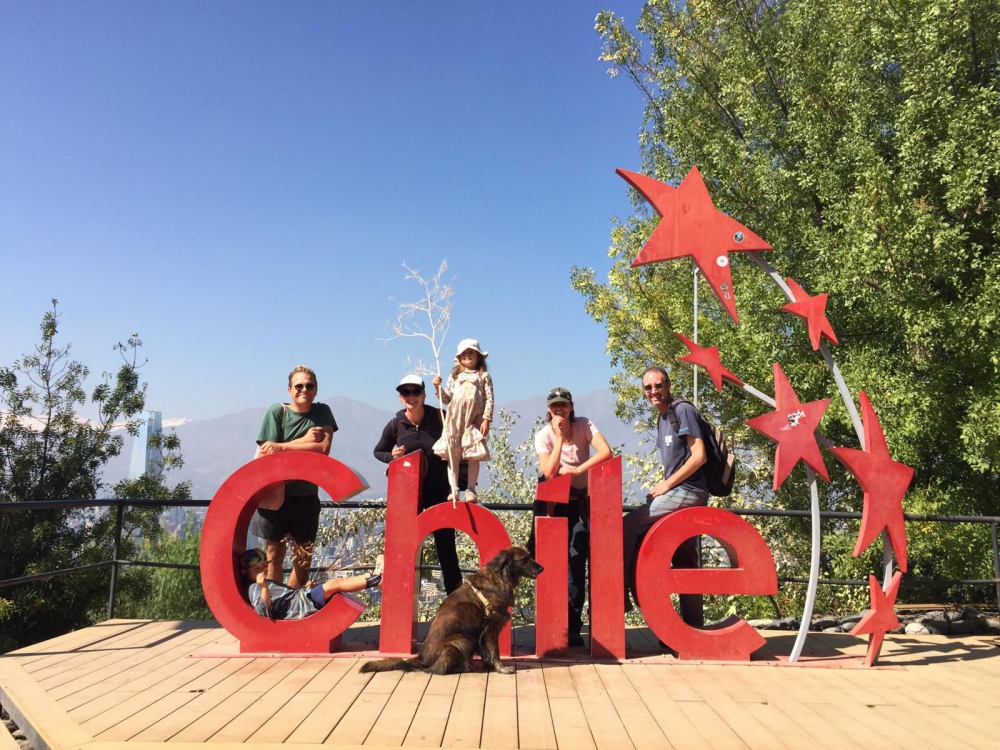
Every month, I post a report of our expenses to show that it is possible to live a comfortable, exciting, and adventurous life without breaking the bank. “The less money you spend, the less you need to make” is our motto. ???? At the beginning of each year, I produce an expense report for the previous 12 months. This is the most recent one, for 2022.
Our first yearly expense report (2016) can be found here, the report of 2017 is here, the one for 2018 here, our 2019 expenses are located here, our total costs for 2020 are documented here, and those for 2021 are detailed here.
These reports include ALL of our expenses, in US$, for two adults and a 60-pound dog. We adopted Maya on June 4th, 2019. Under groceries we incorporate food, produce, and non-alcoholic drinks predominantly bought in supermarkets. Toiletries belong in that category as well. Dining out means eating at a restaurant/event or purchasing take-out food. The health category covers non-prescription medicines and vitamins/supplements; medical contains prescription drugs and doctor’s visits. Because of our income level, Mark and I are eligible for free health care within the state of Massachusetts. For check-ups, we both return to the US East Coast. The utility cost refers to phone data plans, initially with AT&T and at the end of 2022 with Google Fi.
It feels like 2023 has only just started, yet we are already a month into it. Crazy how time flies. I better publish our 2022 expense report, before the February 2023 one is due!
(As always click on or hover over photos in galleries to read their captions.)

Leaving Auburn, California, with our “new” Lance camper

Watching the car carriers before it was our turn

Thirsty Bella dropped off in Galveston port, ready to be shipped
In 2022, Mark, Maya, and I focused on purchasing, fixing, equipping, and upgrading our current truck camper, a Lance 830, in the Pacific Northwest and Colorado. Before that, we explored the Baja peninsula in Mexico for 3.5 months. We completed the year in Cartagena, Colombia, happily reunited with Thirsty Bella, which we had shipped there from Texas. I also visited my home country of Belgium for two weeks, but my parents took care of me there. 🙂

We made it to Colombia!

Colombian church

Back on the road – in south America!

Road travel – and obstacles – in Colombia

Driving through the mountains
Last year was relatively expensive, especially if you add the one-time cost of shipping our truck camper to the mix (see below). We better live extra cheaply this year to make up for that!
The highest category in 2022, by far, was our car and more specifically the fuel. Over $4,000! We purposefully decided not to drive to the East Coast over the summer (to visit family, friends, and doctors), because of the exorbitant gasoline prices. But we did make it to the southern tip of the Baja peninsula in Mexico (and back) with our previous Cirrus camper and ended up driving huge distances to find and pick up our current truck camper in super expensive California. I can’t say any of that was planned, but such is life – our life anyway.

Fuel prices in the US, last year

Fueling up in Mexico

Driving on paved mountain roads in Colombia

On the road in a small Colombian town
Vehicle insurance and maintenance for our Ford F-350 each cost over $600 as well. We prepped the truck for this extended adventure in South America, which included spare parts, oil and filter changes, and a tire rotation and alignment.
Mark and I have periodically discussed our annual high prices for maintaining and fueling the vehicles and sailboats we own(ed), which made us realize that we could easily use this amount for plane tickets to house and pet sit internationally. As a matter of fact, that was the plan… before we adopted our Maya, three years ago. That’s when the South America trip became our goal. Then, Covid arrived.
Groceries is the second-highest category and averages $268 a month. Not bad. This is always the most straightforward subject. What is there to say? Everyone needs to eat. In our case, we stick to a healthy, mostly plant-based diet and consume 95% of our meals at home. Here in Colombia, we eat out a bit more, because it’s affordable.

Massive salad for dinner at home

Homemade salad with cocktail shrimp
Travel costs went to plane tickets for Mark, who needed to fly to Massachusetts twice (once from Mexico and once from Oregon) for family and healthcare reasons. Our dining out expense was almost a grand as well. I’d like to say it will be less this year, but even though food is much cheaper here, we probably will eat out more, so things might even out. We will see.

Dinner out with friends in La Paz, Mexico

Street tacos in Todos Santos, Mexico

Dinner out in Loreto, Baja, Mexico

Pizza at a restaurant in Mompox, Colombia

Lunch out at a local restaurant in Cepita, Chicamocha Canyon, Colombia
Everyone knows that taking care of a dog isn’t cheap. In Maya’s case, we spent over $900, mostly on food, her anti-itch medicine (Apoquel), and one expensive vet visit enabling and preceding our move to South America.

Maya getting ready for her exam, extra shots, and international health certificate
Our utility cost for 2022 also seems high at $800. The majority of that went to internet, unsurprisingly, but almost $200 was “wasted” on propane, thanks to the ordinary fridges put in RVs. Even though they are called 3-way fridges, they run inefficiently when using their DC power source. We don’t use AC, because we never plug into power. When using an RV fridge solely on propane, we emptied two full 20-pound propane tanks every month, and that’s being careful by monitoring the temperature and adjusting the settings.
Like fuel, propane gas prices swung through the roof last year. Filling our two tanks cost around $40 every month and there was the hassle of finding propane places that actually filled tanks instead of just swapping them out. Tractor Supply and U-Haul used to be safe bets but they aren’t anymore.

Maneuvering the new fridge through one of the windows

Prepping the compressor fridge to be installed

Removing the old, partly disassembled fridge, from the camper

Dry fitting our new fridge

Painting the new cabinetry
Because of all these reasons – the hassle, money, research, wasted trips and phone calls, worry of running out of gas, and lack of freedom – we replaced our propane fridge in Thirsty Bella with a 12V compressor fridge that we can easily run with the power created by our solar panels. In Mexico we paid for agua purificada (purified potable water) to fill our water tank.

Inquiring about potable water in Mexico

Filling with potable water in the US, which is free

Filling up with water at a private house in Colombia
Another big – and extra – expense was a new hybrid computer/laptop for Mark. That section underneath also includes hosting fees for our website and some software Mark bought. When it comes to adult beverages, my husband and I occasionally like to drink beer (only Mark) and wine and usually have one bottle of hard liquor around. There is no space for more. Our preferred alcoholic drink is rum with fresh juice, ice cubes, and a slice of lime.
Gifts include the annual calendars I create for our Belgian and American families, gestures (usually bottles of wine or dessert goodies) we bring when invited for dinner, a contribution to utilities when we stay on someone’s driveway for a while, Christmas gifts for friends we end up traveling with, excursions we do with our nieces and nephews, and birthday presents for each other, although I don’t recall any of those in 2022.

Breakfast prepared by friends in Portland, Oregon

Clam chowder made by Katherine in Oregon

Fresh (giant) oysters in Oregon

Seafood fest with friends on the Oregon coast

Our friend in Austin, Texas, presenting us with dinner
Household items are improvements for our life inside the camper – cooking, storing, light fixtures, … – and the camper category resembles materials and tools required to keep our home on wheels running. This last amount is low, because it does not include the money spent equipping our camper for South America, which we consider part of its purchase price and not maintenance cost. I will write a separate post about this in the future.

Camped on the beach in Baja

Our favorite camping spot of 2022 in Agua Verde, Baja, Mexico

Camped in San Juan National Forest, Colorado

A couple of weeks in the workshop of friends in Colorado

Camped in New Mexico

Hanging out with friends on the beach in Texas

Camped with friends by the ruined church of Gramalote Viejo, Colombia
In the US, we always camped for free, but because we traveled in Mexico for a third of the year, there is a substantial accommodation cost as we tend to stay at campgrounds there once in a while. Some of this category’s amount was spent in Colombia, on camping and a hotel.

Camped along Bahia Concepcion in Baja

Our paid campground in Loreto, Baja, Mexico

Pay camping in Ensenada, Mexico

Last night in a Colombian hotel!

Camped at Los Estoraques National Park, Playa de Belen, Colombia

Campground in Gramalote Nuevo, Colombia
The clothing expenses were higher than the previous year, because we made sure to have decent pairs of hiking shoes, rain jackets, jeans, and shirts to hold us over for a few years. In 2023, we hope this amount, in addition to the “computer” section, is negligible.
Drinking out is self-explanatory and transport covers taxis (in Colombia), Uber (to get to Houston airport from Galveston), and public transportation when we visit Massachusetts. Customs and Immigration fees were mostly paid in Mexico for tourist cards and towards a new Belgian passport for me. Luckily, those are now valid for seven years instead of five.

Cashier’s checks cost $15!
Banking costs went to our annual credit card fee and a cashier’s check to pay for our Lance camper (yes, that costs extra money). Health & Fitness includes vitamins (Mark) and occasional haircuts (me). This amount should mostly disappear as well. We gave up on the vitamins (don’t want to deal with it here), we keep cutting Mark’s hair ourselves with clippers, and my twice-a-year haircuts should cost a quarter of the price in South America.

Street view in Loreto, Mexico

Hike through Mesquite Canyon, Baja

Dunes in Baja

Natural bridge in Baja

View over the bay of Agua Verde, Mexico

Shoshone Falls in Twin Falls, Idaho

Idaho’s State Capitol in Boise

Going for a (free) horse ride in Colorado with friends

Street view Getsemani

Fort of Cartagena

Historic buildings in Cartagena
We spent less than $100 on entertainment. Most of our hobbies, like hiking, visiting natural attractions, writing, and reading are free. We never visit museums or pay for expensive activities. Last year, we bought two sets of snorkel gear (still to be used) and paid the entrance fee for a few parks.

Hike high into Deschutes National Forest

Hiking with a friend and her dogs in Oregon

Los Estoraques National Park, Playa de Belen, Colombia
Our medical cost is usually minimal, but last year Mark had to pay for an expensive Covid test in Mexico and I had two new pairs of prescription eye glasses mailed to an address out west. My husband chipped in for his dad’s memorial service (miscellaneous), we paid for laundry in Mexico (the rest of the year we managed to use the facilities of friends), and a small amount of money went to postage.

Sunrise along the Baja Peninsula
Extra one-time costs for 2022
One big expense not included in this annual report is the $5,497 we paid for shipping and agent fees to transport our home on wheels to South America for a multiple-year adventure.

Camped for a summer of work on the Lance, St. Helens, Oregon

Lots of work, tools, and gear

Sanding, taping, and painting the ladder

Scraping old caulk off to reuse this hatch

Removing the old letters of the camper to start fresh with cow spots

Installing a secondary water tank, Colorado

Attaching more cow spots, Oregon
So, what would have been a decent year in general at $16,809 (which is about $800 more than our average, not bad under the circumstances of inflation and super high fuel prices) is not so great anymore when you add the $5,500 of shipment costs to the mix. That’s around $22,300 in total. Let’s hope the year 2023 will be a fraction of that!
